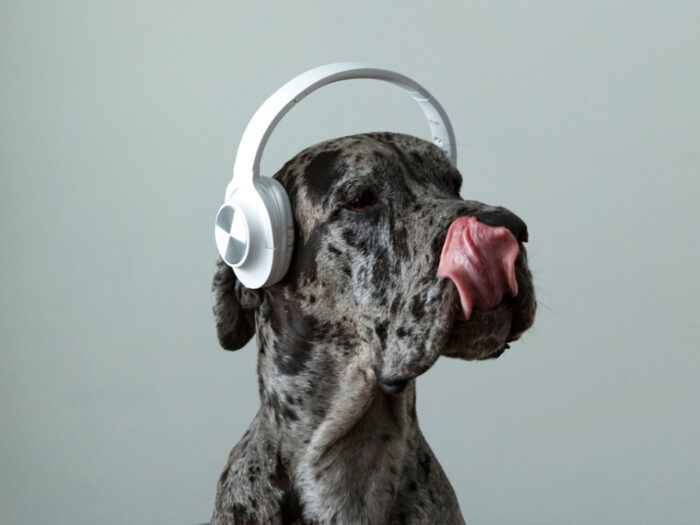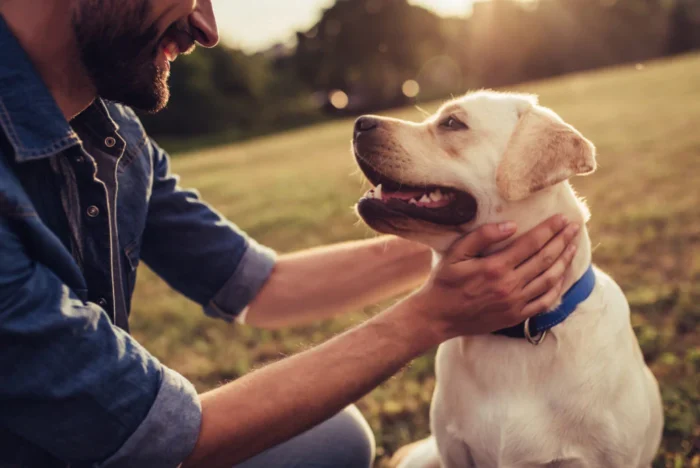
Most canines can be sympathetic which empowers them to figure out others’ sentiments, particularly of their owners.
Assuming the owners are in stress, dogs can feel it as well, and sometimes this can cause the furry friends to suffer from some emotional turmoil. Canines can likewise be delicate to noisy environments, caused by thunderstorms, fireworks, and construction works. Music is known for keeping canines quiet during anxious circumstances like this.
While there are countless genres of music that exist in the world, dogs appear to be particularly fond of Folk music. In a recent study, using a dog fitness tracker that allowed the participating owners to keep track of their dog’s activities per day, be it sleeping hours or playing duration, it came to attention that folk music helped the canines the most to get settled in for the night. The study concluded that the dogs slept for about 60 minutes, barely moving any muscle, while folk music played in the background. The typical rest time for canines is around 46 minutes so it is evident folk music helped the canines get more rest than ever.

Looking at the sleep score, it is revealed that four-legged friends scored 88% to 92% listening to folk music the night before and then 87% listening to Jazz. Meaning both jazz and folk calmed their nerves and helped them soothe their anxiety levels.
Besides folk and jazz music the furry friends also seem to be fond of classical music. Research reveals dogs prefer classical music over calming audiobooks. It is claimed that dogs lie down significantly faster while Beethoven or Mozart plays in the speaker.
Now you may be wondering how dogs that do not understand lyrics, or instruments, or don’t have the faintest idea of how to dance to rhythms, can have a specific music taste.
Another question that might arise is how can we reach a conclusion just by counting down a dog’s sleeping hours. We are here to tell you that the study does more than just look into a dog’s sleeping score. Researchers measure a dog’s heartbeat before, during, and after listening to music. And the team draws in the results depending on the tunes that slow down the canine’s heartbeat the most.
They are also known for measuring cortisol concentration in the saliva to see which genre is the best at calming down anxious pups. According to a study done in 2017, it implies that dogs also respond well to soft rock and reggae.
If your dog prefers listening to multiple genres of music you can find many dog-friendly playlists available on Spotify.
How to Introduce Music to Your Dog

Properly introducing music can play an important role in a dog’s physical and emotional health. Music can work to calm, soothe, and entertain a pup. When selecting music for your pooch, there are several important factors to consider.
The tempo of the song is important since a dog’s heart rate should remain steady while listening. It should be neither too fast nor too slow—around 60-80 beats per minute is ideal for calming dogs. Songs with melodic structure and steady rhythms are best; classical or acoustic vocal songs are good choices as the range of pitches makes it more interesting for the dog.
When introducing a canine to tunes for the first time, start at a low volume and gradually increase it over time until you reach the level you prefer. Monitor your pet’s behavior for indications of enjoyment or distress—for instance, if he starts barking or moves away from the sound source, pause before repeating the session at a lower volume. Remember that different types of music have specific purposes—ambient music may help induce sleep while upbeat tunes like jazz may encourage physical activities like fetching balls!
Creating a Relaxing Environment
Creating a calming, safe, and secure environment for your dog can help him or she relax. Here are some tips to create a relaxing environment for your pup:
- Minimize distractions from other animals or people and noise levels. Dogs have much better hearing than we do and loud noises can be stressful for them.
- Set a routine for meal times, potty breaks, and exercise times, so that your pup knows what to expect throughout their day.
- Make sure that their space has plenty of comfortable bedding and toys they enjoy so they feel at home in their space.
- Use calming scents such as pet-specific sprays, diffusers, or candles to relax them before “time”.
- Place a sheet or blanket over any windows of the room to block out extra light and create darkness which helps naturally relax pups during the nighttime hours as well as keeping them from barking at outdoor activities occurring outside of the open window.
- Play soft background music with chill vibes to set the tone in the area where your pup spends most of their time, such as their bed area.
Other ways to help your pet relax

Helping our dogs relax can be one of the most rewarding things for both the dog and the pet owner. With some patience and care, you can learn how to help your dog maintain consistent emotional balance. Here are a few tips to get you started:
- Exercise: Offering your pup regular exercise is an important part of helping them stay relaxed and calm. Walks, hikes, runs, or even just playing fetch can all help burn off extra energy that can build up in anxious dogs.
- Positive Reinforcement: Positive reinforcement works wonders when it comes to calming dogs down. Try using rewards like treats, toys, pats or even verbal praise when your dog demonstrates good behavior or relaxes without becoming overly excited or agitated.
- Relaxation Techniques: There are various techniques that you can use both during and outside of high-stress situations in order to help your pup relax quickly and effectively. Examples include carrying them in your arms, diffusing lavender essential oils into the air, and providing a massage or sensory stimulation like brushing their fur coat often with a soft brush.
- Avoid Triggers: Identifying stressful triggers can make all the difference when it comes to helping alleviate anxiety levels in pets so you should try your best to diagnose what these triggers may be as soon as possible since every dog’s individual reactions vary differently based on their experience with different environments and people they come across every day. Variety is key! Make sure you switch up their regular routine every once in a while and expose them more often than not to new stimuli which they’ll feel safer exploring; animals enjoy learning from new experiences by stretching themselves outside of their comfort zone!

Remember, even with conditioning and training, some dogs are simply too anxious to be around people and other animals. In these cases, medications may be helpful to ease anxiety and reduce fear-based behaviors. No matter the cause or severity of your dog’s stress and anxiety, it’s important to keep the lines of communication open between you and your veterinarian.
















